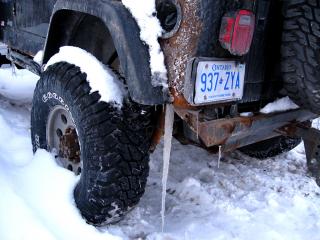Three years ago today, I first turned on my 14″ G4 iBook. Since then, it has served me very well: progressing from Panther through Tiger to Leopard and from Photoshop 7.0 to CS2. The machine has served purposes ranging from editing every photo posted to this site to serving as the platform on which my thesis was written to initiating video calls through Skype. Unlike most of my electronics, it has never needed to be handed over to a technician for repair. That said, the machine is definitely showing its age – particularly in terms of processing power and hard disk space.
Three years is a decent lifespan for a laptop (especially one that was a value rather than a performance model from the outset) and I am planning to replace the thing within the next few months, finances permitting. While the MacBook is an obvious successor, I am leaning more towards one of the Intel-based iMacs. I will still have the old iBook to lug around for taking notes and writing emails, when required, and it’s a whole lot nicer to watch movies on a 20″ screen than on a 14″ one. I would also feel a lot more unconstrained with a 250 gigabyte drive than with an 80 GB one.
Setting up my mother’s system also provided a hands-on demonstration that the new iMacs are more than elegantly designed boxes. They are well-designed, well-integrated systems focused on doing the things for which any computer I use is essential. The Mighty Mouse may be fiddly and frustrating, but that’s the only element of the package I found to be less than excellent.
[Update: 1 April 2008] I was seriously thinking about buying a 20″ iMac this month, but the fact that the new ones will have inferior screens is giving me pause. Apparently, the new screens only show 2% of the colours the old ones did.
[Update: 22 August 2008] I got my new 24″ iMac today. It’s a gorgeous machine, and I especially appreciate how well the Migration Utility works for transferring files and settings from an old to a new Mac. In the tradition of naming my computers after characters from science fictions books, I have dubbed this one ‘Seldon’ after Hari Seldon of Isaac Asimov’s Foundation universe.



